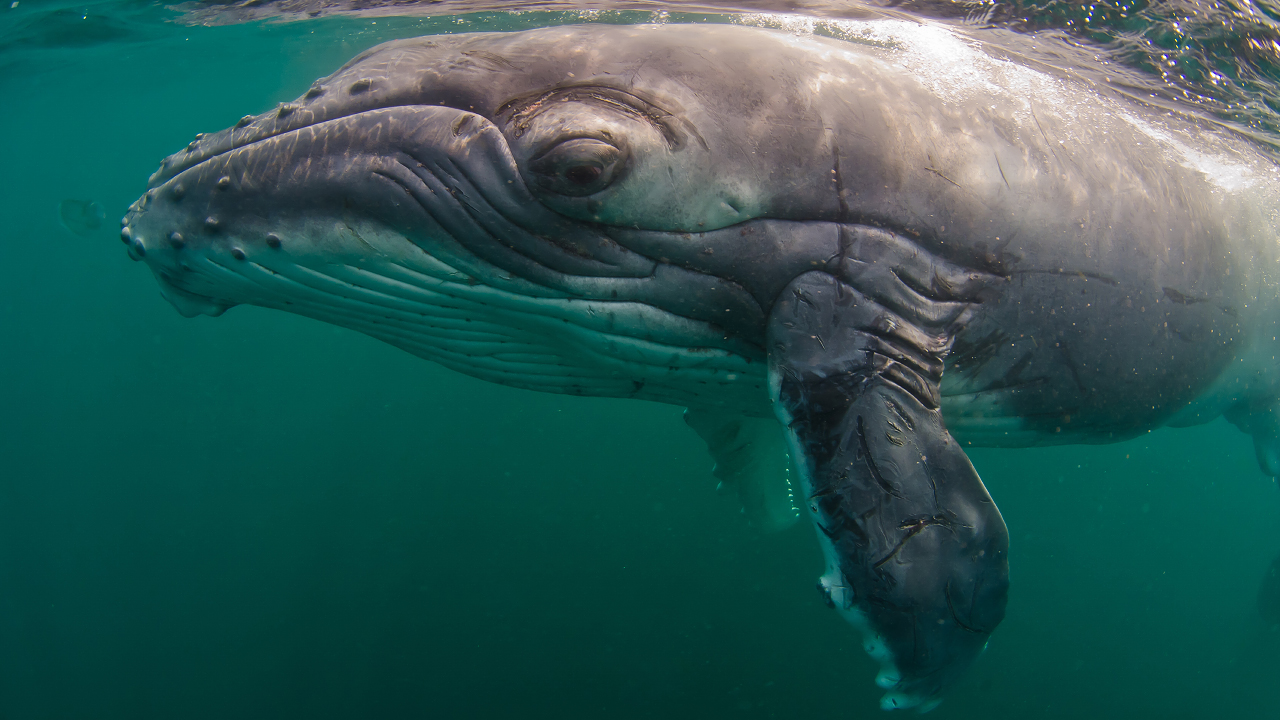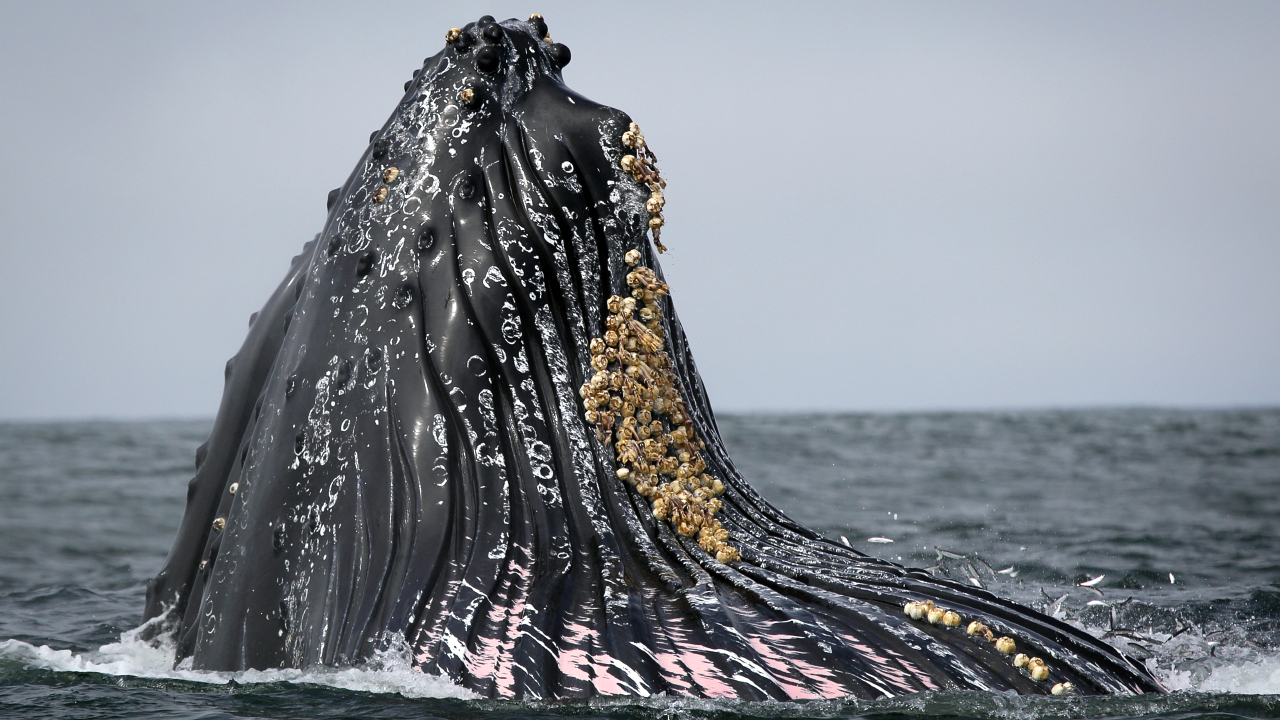Humpback whale
Megapera novaeangliae
-
 The humpback whale is a baleen whale and belongs to the rorqual family (Balaenopteridae), a family that includes, for example, the blue whale, fin whale, sei whale and minke whale. It has distinctive features and is more genetically distinct from all other rorquals, thus it has been given its own genus, Megaptera, while other rorquals belong to the genus Balaenoptera.
The humpback whale is a baleen whale and belongs to the rorqual family (Balaenopteridae), a family that includes, for example, the blue whale, fin whale, sei whale and minke whale. It has distinctive features and is more genetically distinct from all other rorquals, thus it has been given its own genus, Megaptera, while other rorquals belong to the genus Balaenoptera. -
 Humpback whales can perform various, complex and co-operative feeding techniques, such as the bubble net feeding. When using that particular technique, they emit bubbles in the deep below a school of fish while swimming in circles. The fish become entrapped within the bubbles, making it easier for the humpback whale to engulf a large amount of fish in one gulp.
Humpback whales can perform various, complex and co-operative feeding techniques, such as the bubble net feeding. When using that particular technique, they emit bubbles in the deep below a school of fish while swimming in circles. The fish become entrapped within the bubbles, making it easier for the humpback whale to engulf a large amount of fish in one gulp. -
 The humpback whale produces a great variety of sounds for various social purposes and also when hunting. The most spectacular sounds are their long and complex mating songs, sung by the males with great enthusiasm during the mating season. Humpback whales grow to be about 16 m long, weighing 27–45 tonnes. The females are slightly larger than males, as with all baleen whales.
The humpback whale produces a great variety of sounds for various social purposes and also when hunting. The most spectacular sounds are their long and complex mating songs, sung by the males with great enthusiasm during the mating season. Humpback whales grow to be about 16 m long, weighing 27–45 tonnes. The females are slightly larger than males, as with all baleen whales. -
 The four-chambered heart of the average humpback whale weighs about 195 kg, about as much as three average adult human beings. It is possible that the heart of a humpback whale can hold up to 1500 l of blood. Their heart rate is approximately 30 beats per minute. Humpback whales have 14–35 throat grooves that run from the chin to the navel. These grooves allow the throat to expand during the huge intake of water during filter feeding. They have small, round bumps on the front of the head called knobs or tubercles, edging the jaws.
The four-chambered heart of the average humpback whale weighs about 195 kg, about as much as three average adult human beings. It is possible that the heart of a humpback whale can hold up to 1500 l of blood. Their heart rate is approximately 30 beats per minute. Humpback whales have 14–35 throat grooves that run from the chin to the navel. These grooves allow the throat to expand during the huge intake of water during filter feeding. They have small, round bumps on the front of the head called knobs or tubercles, edging the jaws. -
 They are gulpers not skimmers, filter feeders that alternatively swim then gulp a mouthful of plankton or fish. Concentrated masses of prey are preferable for this method of feeding. An average-sized humpback whale will eat 2000–2500 kg of plankton, krill and small, schooling fish each day during the feeding season in cold waters. Humpbacks travel in large, loose groups. Most associations between humpbacks are temporary, lasting at most a few days. The exception is the strong and lasting bond between mother and calves.
They are gulpers not skimmers, filter feeders that alternatively swim then gulp a mouthful of plankton or fish. Concentrated masses of prey are preferable for this method of feeding. An average-sized humpback whale will eat 2000–2500 kg of plankton, krill and small, schooling fish each day during the feeding season in cold waters. Humpbacks travel in large, loose groups. Most associations between humpbacks are temporary, lasting at most a few days. The exception is the strong and lasting bond between mother and calves.
